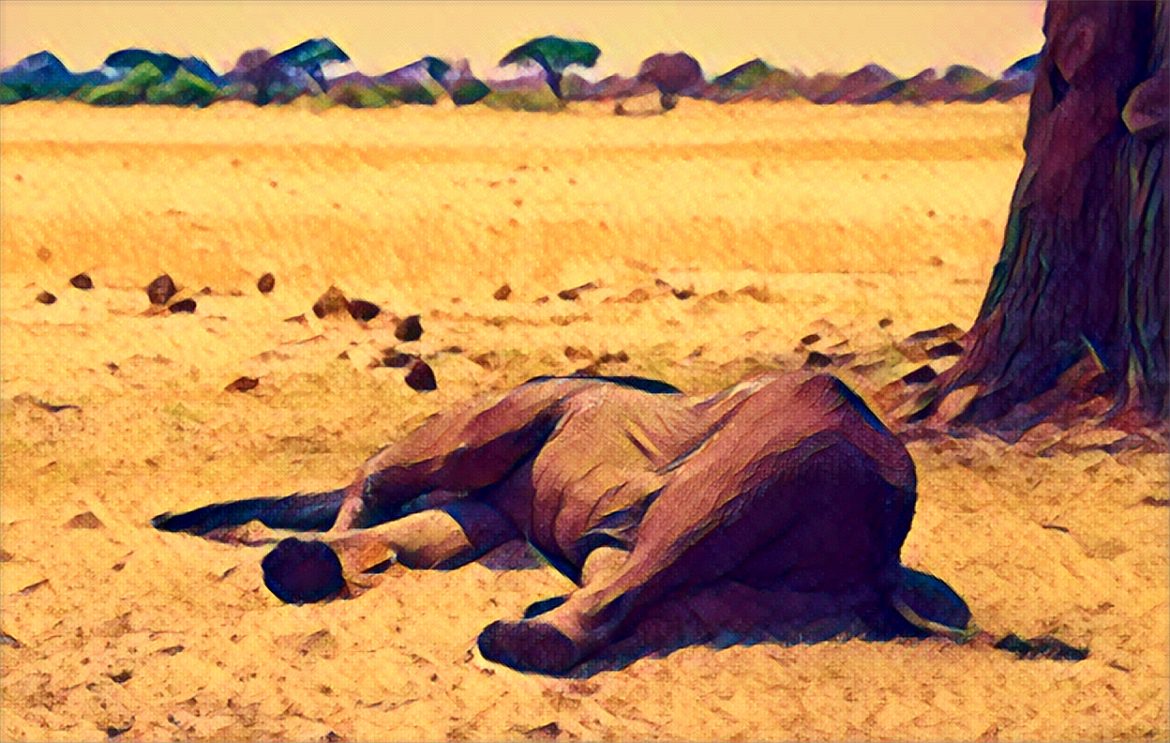Zimbabwe’s largest national park, Hwange, is witnessing a tragic scene of mass elephant deaths as a severe drought dries up water sources and food supplies. At least 100 elephants have died in the park since August, according to the International Fund for Animal Welfare (IFAW), which warns that the situation could worsen as the dry season continues.
The park, which covers an area of about 14,600 square kilometers, is home to around 45,000 elephants, as well as more than 100 other types of mammals and 400 bird species. It relies on 104 solar-powered boreholes to pump water for the animals, but these are not enough to cope with the extreme heat and lack of rainfall that has affected the region.
“The most affected elephants are the young, elderly, and sick that can’t travel long distances to find water,” said Tinashe Farawo, a spokesman for the Zimbabwe National Parks and Wildlife Management Authority. He added that the park authorities were working with conservation partners to drill more boreholes and provide supplementary feed for the animals.
The elephant deaths in Hwange are part of a wider crisis that is threatening wildlife across southern Africa, where climate change and the El Nino weather phenomenon have caused prolonged droughts and floods. In neighboring Botswana, about 350 elephants died mysteriously between May and June this year, raising alarm among conservationists and researchers.
A study published in October found that the cause of the deaths in Botswana was cyanobacterial neurotoxins, produced by algae that grow in stagnant water. The toxins can affect the nervous system of animals and humans, causing paralysis and respiratory failure. The researchers suggested that climate change may have created favorable conditions for the growth of the algae and that the elephants may have been more vulnerable due to stress and malnutrition.
Climate change is also increasing the frequency and intensity of El Nino events, which occur when warm water accumulates in the eastern Pacific Ocean, affecting weather patterns around the world. El Nino typically causes below-average rainfall and higher temperatures in southern Africa, exacerbating the drought conditions and the risk of wildfires.
According to the World Meteorological Organization, there is a 54% chance that El Nino will return in 2023, potentially bringing more challenges for the region’s wildlife and people. The UN has warned that El Nino could worsen the humanitarian situation in southern Africa, where more than 45 million people are facing food insecurity due to crop failures and rising food prices.
However, despite the grim outlook, there is still hope for Zimbabwe’s elephants and other wildlife. Conservation groups such as IFAW and The Bhejane Trust are working with the park authorities to provide water and food for the animals, as well as to monitor their health and behavior. They are also raising awareness and funds to support the park’s management and protection.
“Zimbabwe’s elephants are a national treasure and a global heritage. They deserve our care and respect, especially in these difficult times,” said Phillip Kuvawoga, a landscape program director at IFAW. He urged the international community to help Zimbabwe and other countries in the region to cope with the impacts of climate change and to conserve their biodiversity.
Source: Sky News


